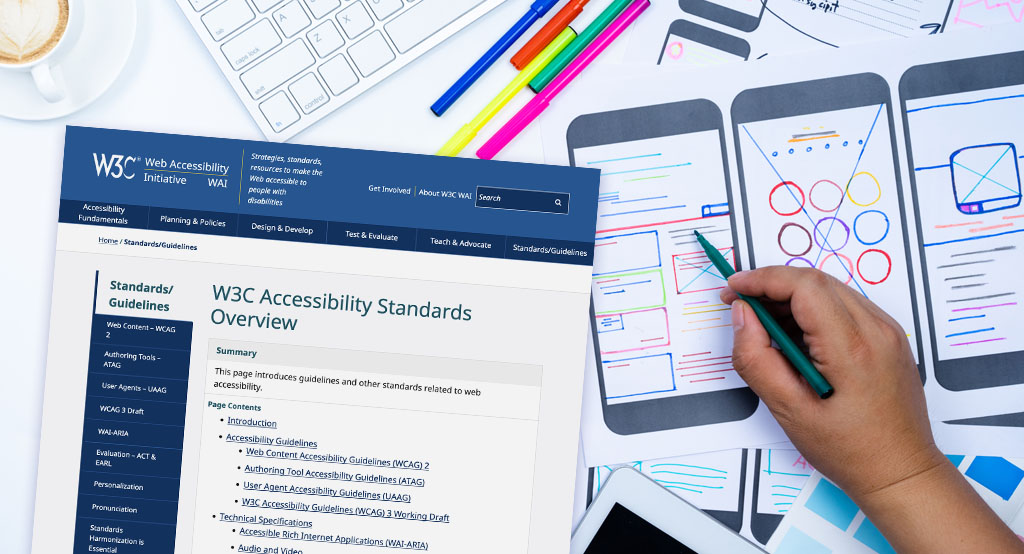Accessibility standards are the nuts and bolts of digital products and closely related to human-centered design or usability. You design great experiences for people’s particular needs, while at the same time making sure the design is accessible to everyone.
Make Accessibility Your Design Trend
We naturally look to our competitors for design inspiration. We might be inclined to follow eye-catching design trends, without considering the implications for your own business. The product or service might work just as effectively with a much simpler, less resource intensive design approach.
If design is guided by good accessibility standards, you are on your way to eliminating potential pain points for users. More than anything, people now want speed first and foremost. Good accessibility standards will help make design more efficient.
You can design highly creative experiences that work equally as well for people with physical impairments or in difficult environments.
Websites Are Not Special Effects Movies
Sadly, our constant annoyance and frustration with getting things done online is caused by intrusive devices wanting to interrupt us with evermore popup windows and chat-bots, rather than showing us empathy. I don’t have any hard data, but I would guess that the few businesses that fully embrace accessibility have happier customers.
Much of the animation or movement you see on a web page needs extra processing power to run it, which means more code. This slows pages down and inevitably people click away. Good accessibility requires no scripts at all, or at the least the bare minimum required for website functionality. At the very least fall-backs should be in place when the special effects don’t work.
Evolution Of Accessibility Standards
The very basics of accessibility compliance ensures websites can be interacted with and enjoyed by everyone, of all ages, particularly those with physical restrictions or health conditions. We also have to consider the context in which people use an app. Particularly mobile devices, as we are often not sitting comfortably at a desk when using the internet
“Web accessibility encompasses all disabilities that affect access to the Web, including: auditory, cognitive, neurological, physical, speech, visual.” W3C Web Accessibility
Coding standards for websites evolved from guidelines set out by W3C (World Wide Web Consortium). These standards explicitly emphasise, rightly, equal access for people with physical disabilities. Laws may apply in some cases, particular government websites. But any business would be foolish to ignore them completely. Accessibility improves your business reach.
Accessible Visual Design For Everyone
Links and buttons should be large enough and with good colour contrast to be obvious they are links. Ensure text links are very descriptive. Never assume a person is using a mouse, often we navigate the web using touch and swipe.
Many websites still design pages with very small text, which is almost unreadable. Though you can use the zoom feature in your browser. But typography should be set large enough to be read without needing to zoom. Fonts should be selected for their readability over their aesthetic quality. Perhaps even amend your company’s brand guidelines to allow for this.
Graphics and images must have alternative text descriptions that can be read by screen readers. Web pages should still make sense without any visual aspect at all.
How Accessible Is Your Website?
In reality, almost all websites are not fully compliant with W3C standards. But beware of paid subscription services that offer a free accessibility check on your website. Which are often designed to scare you with legal action if you don’t sign-up to their service. But of course, installing an accessibility app will invariable add more unwanted scripts to your site.
When commissioning a new product, accessibility standards should be baked into your design brief. W3C also provide a free HTML Markup Validator, which is perfect for checking how accessible your current website is. It will flag up any coding issues which you can then pass onto your development team.

